You have no items in your shopping cart.
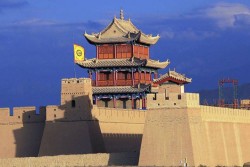

Introducing Jiayuguan Fortress (from Chinaculture.org & Wikipedia)
The Jiayuguan Fortress is not only the western end of the Great Wall of the Ming Dynasty (1368-1644), but also a key waypoint of the ancient Silk Road., which was first built in the 5thyear (1372) of the Hongwu reign in the Ming Dynasty. It is so called because is built at the foot of Jiayu Mountain. Along with Juyong Pass and Shanhaiguan, it is one of the main passes of the Great Wall. Among the passes on the Great Wall, Jiayuguan is the most intact surviving ancient military building. The pass is also known by the name the "First and Greatest Pass Under Heaven". Jiayuguan has a somewhat fearsome reputation because Chinese people who were banished were ordered to leave through Jiayuguan for the west, the vast majority never to return. Amongst those once banished in disgrace was the famous Chinese Opium War Viceroy of Liangguang, Commissioner Lin Zexu, who died in Urumqi where a statue in his honor can today be found in a local park. After three large-scale repairs and decorations in 1950, 1957 and 1973, the Jiayu Pass took on a new look as an impregnable pass. Many visitors come to the Jiayu Pass to cherish the memory of the past.
Jiayuguan Fortress Fast Facts
• Chinese Name: Jia Yu Guan 嘉峪关
• Best Time to Visit: April to October
• Recommended Visiting Hours: 1-2 hours
• Things to Do: Photography, Hiking, Architecture, History
• Opening Hours: 08:30-20:00 from May to Oct; 08:30-18:00 from Nov to Apr
• Entrance Fee: CNY 110 from May to Oct; CNY 90 from Nov to Apr. The entrance ticket includes the First Strategic Post and Overhanging Great Wall.
• Address: 6km Southwest of the Jiayuguan City, Gansu Province
What to expect at Jiayuguan Fortress
The circumvallation of the Jiayu Pass looks trapeziform and there is a thick wall built outside the western circumvallation, which makes the defense of the circumvallation stronger. The circumvallation is 11.7 meters high and 733.3 meters long in total. There is an area of more than 33,500 square meters of the circumvallation. Outside the northern and southern circumvallation are parallel low cob walls, which are called the additional wall built for defense.
The city walls have two gates: the eastern one named Guanghua Gate and the western one named Rouyuan Gate, both of which have gate towers, 17 meters high, three-bay wide, with three-tiered gable and hip roof and surrounded by enclosing porches, looking grand and majestic. In the northern side inside the city walls is a wide slope horse way, directly leading to the top of the city wall.
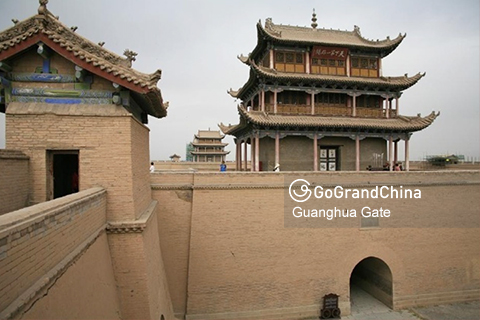
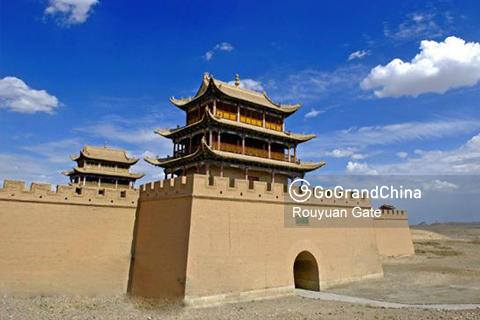
Outside the eastern and western gate, are built small enceintes of the gates. The gates of small enceintes open southwards, but are not connected with the main gates of the city walls. The eastern gate of enceinte is called Chaozong, while the western one called Huiji. More than 10 meters outside the western gate is quadrate double-barriers, side by side with the city walls, whose gate opens westwards. There is the name of the Jiayu Pass carved powerfully and vigorously on the upper part of the lintel.
Walking westwards out of the city gate, about more than 100 paces, one will see a big stone tablet on which are carved four big characters that mean impregnable pass in the world, which was set up in the Qing Dynasty (1644-1911). On the four corners of the city walls, there is a two-storeyed watchtower each, like a blockhouse. In the right middle of the northern and southern city walls is built a lookout tower each, which is two-bay wide with front porches. On the west, the south and the north sides of the additional walls also stands a watchtower each. It is said that when building the pass, workmen made a most precise estimation of materials and as a result only one brick was left. This brick is still kept on the eaves of the gate tower of the western enceinte. Outside the eastern enceinte there are some buildings such as the Wenchang Pavilion, the Guandi Temple and the Theatre Building, and inside it there is an Office of Guerrilla Warfare, which were all built in the Qing Dynasty.
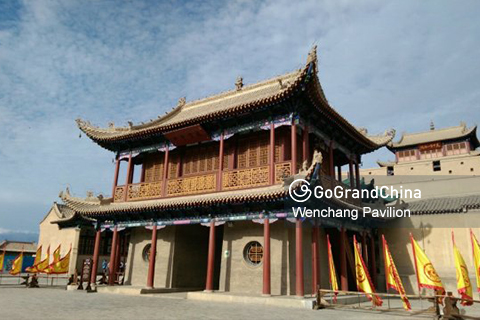
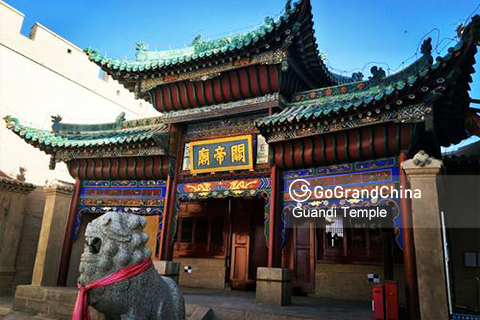
How to get to Jiayuguan Fortress
• Jiayuguan Fortress is approximately 6 km away from Jiayuguan City.
• Take bus 4 or 6 to the Guancheng Scenic Area.
• There is no shuttle bus among Jiayuguan Fortress, the First Strategic Post and the Overhanging Great Wall. It is suggested to charter a minibus to travel between them.
• Rent a car/bus from GGC to enjoy a hassle free private transfer from hotels in Jiayuguan to Jiayuguan Fortress.
Additional travel advice on Jiayuguan Fortress
• Please wear sunscreen, hat and sunglasses to prevent strong sunlight.
• Please wear body lotion, lip balm and hand cream as it is always dry in Jiayuguan.
• Please prepare a scarf to cover your face in case there are sandstorms. It is better to check the weather forecast in advance when taking outdoor activities.
• The best time for photographing is during the sunset.